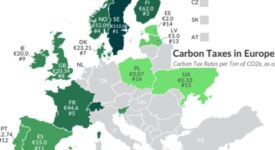When COVID-19 went global about a year ago, the memory of the 2008 global financial crisis was still fresh, and policymakers pulled every lever at their disposal to maintain financial stability. The reaction to the previous crisis had indeed been somewhat slow and confused, especially in Europe, because no one at the time had ever dealt with anything like it before. But 2020 was different.
In Europe, policymakers intervened on a massive scale, with the European Central Bank expanding its balance sheet from an already high pre-crisis level of €4.7 trillion to more than €7 trillion – two-thirds of eurozone GDP. At the same time, governments stepped in to support incomes, mostly through expanded short-time work schemes, which preserved employment even as people’s hours on the job plunged. In the United States, close to 40 million people had lost their jobs by May 2020, but more than half that number soon found new employment opportunities. In the meantime, many availed themselves of unemployment benefits, and many more households received direct cash disbursements from the federal government. As a result, total US personal income has actually increased during the pandemic. Finally, like the ECB, the US Federal Reserve has expanded its balance sheet substantially and maintained a highly accommodative monetary policy.
These combined fiscal- and monetary-policy blasts were absolutely necessary in the face of an unprecedented economic downturn. Even with such a massive response, Europe and the US experienced a sharp decline in demand as a result of lockdowns that prevented many sectors from producing or selling their products. With businesses shutting down en masse, consumption plummeted, and households saved a significant share of the income support they received. The policy response to the COVID-19 crisis thus has resulted in a massive increase in liquid assets held by the public (and banks), which in turn seems to have helped drive stock markets to record highs and risk premia to near-record lows. But now that the end of lockdowns and other restrictions is in sight, policymakers need to decide whether the situation warrants a gradual withdrawal of support or yet another dose of fiscal and monetary stimulus.
On the question of fiscal policy, one of the big lessons from the 2008 crisis might now need to be unlearned. It has become almost conventional wisdom to say that the reduction in fiscal deficits after 2009 was a mistake. According to this narrative, the rebalancing of public-sector accounts through “austerity” (tax increases and spending cuts) resulted in an especially slow recovery and the ensuing rise of populism. Even the International Monetary Fund has now changed its position on the issue of government debt. But policymakers must ask themselves whether the fiscal-policy lesson of the last crisis is applicable today. The output gaps that persist in some sectors do not reflect a lack of disposable income, but rather restrictions on mobility and a general hesitancy on the part of consumers who fear going out while the coronavirus is still circulating.
In these circumstances, governments need to keep providing replacement incomes for those rendered idle by the pandemic. When lockdowns are lifted, this support can be phased out. But even then, the “GDP gap” will be slow to close, because many sectors will continue to operate below normal capacity for some time to come. In fact, the IMF predicts that some countries will have to wait until 2022 before they return to pre-crisis GDP, because not all sectors can bounce back immediately. Nonetheless, the experience of the past year and common sense suggest that additional large-scale transfers will simply be saved, implying that additional stimulus would have a low multiplier effect on aggregate demand. Given that aggregate-demand stimulus becomes less efficient in a sectoral crisis and recovery, one should not judge deficits in such cases by the metrics used during normal recessions. Under the current circumstances, the output gap and the unemployment rate are both misleading, because they reflect the effects of the pandemic on different sectors, not a general weakness of demand.
From this point of view, there would be no need for the $1.9 trillion fiscal package that is now heading for approval in the US. While much of the US debate has been consumed by concerns about inflation, that is not the key issue. If most of the new transfers to households will be saved, the additional stimulus is unlikely to produce much additional demand, which means that it is also unlikely to fuel inflationary pressure. There are signs that households might start spending more, possibly to compensate for reduced consumption last year. The Federal Reserve Bank of Atlanta’s latest GDP forecast estimates that in the first quarter of this year, US consumption and real (inflation-adjusted) GDP are set to increase at annualized rates of 8% and 10%, respectively.
But even if spending does continue to pick up, it is unlikely to be particularly inflationary, because much of it will go toward goods that can be imported. In this case, the US trade balance would deteriorate further, benefiting European and Chinese producers. Whether or not inflation increases, the Biden package would increase US government debt as a share of GDP by ten percentage points, with little benefit for the US economy. Trying to stimulate an economy that has already begun a vigorous recovery is a lose-lose proposition.
‚Fiscal Follies in the COVID Recovery‘ – Commentary by Daniel Gros – Project Syndicate.







